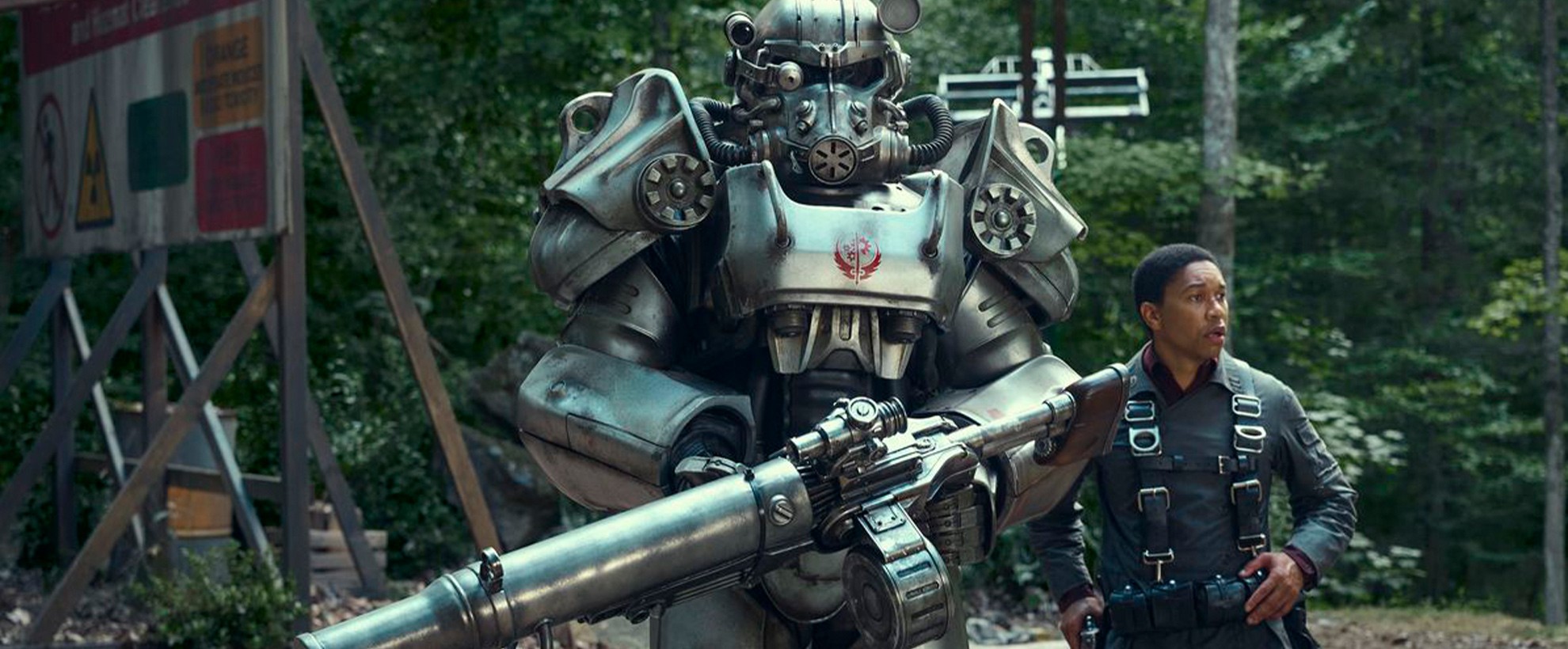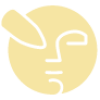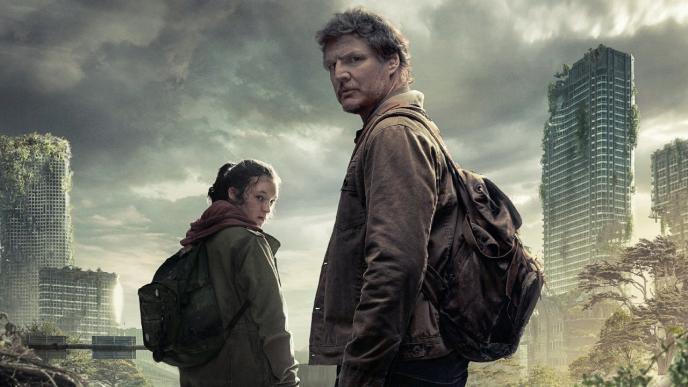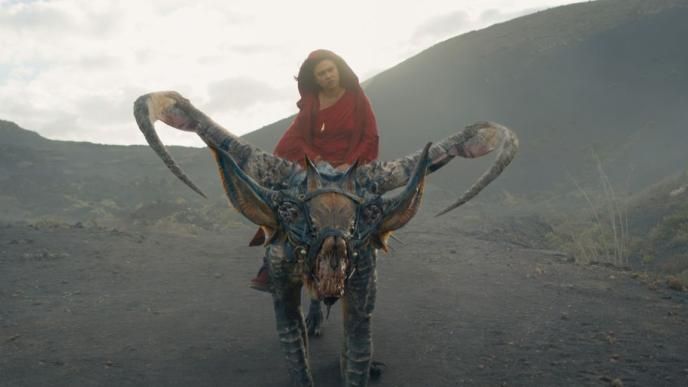
Fallout Season 1
From Westworld Director Jonathan Nolan comes Fallout, the series adaptation of Bethesda’s acclaimed game franchise. Featuring the franchise's signature retro-futuristic aesthetic and maintaining its twisted sense of humour, the TV adaptation for Prime Video presents an entirely new story set in Fallout’s surreal universe.
Fallout is streaming Amazon Prime from 12th April.
Framestore provided a comprehensive range of services, including concept art, on-set supervision, and pre-production to postviz and final VFX. Framestore’s team in Montreal, led by VFX Supervisors João Sita and Laureline Silan, delivered 125 shots capturing the series’ darkly satirical tone and its iconic irradiated creatures, the Yao Guai and Gulper. The concept art and postviz were crafted by Framestore's London-based Art Department and Framestore Pre-Production Services team (FPS) respectively.
“Having a lot of gamers at Framestore we know that Fallout franchise has an incredibly loyal fan base, so the pressure was really on to bring iconic creatures like the Yao Guai and Gulper convincingly to life,” says João Sita, VFX Supervisor. “Production VFX Supervisor Jay Worth and VFX Producer Andrea Knoll were brilliant collaborators because they knew exactly what they wanted in terms of the show’s visual language, and how they wanted to pay tribute to Fallout’s strange and often outrageous world. Jay has a longstanding working relationship with Jonathan Nolan and had been involved with the show from a very early stage, which meant he was able to really drill down into how our VFX could best serve the story. This made for a seamless, trusting working relationship, and one where a range of different crafts - from VFX and concept art to practical FX - really pulled together as one to deliver some fun, thoroughly gross, moments.”
Concept Art
Framestore’s Art Department team designed the concepts for Gulper and Yao Guai, both established creatures from the game. The challenge here was to create original concepts that would fit within the post-apocalyptic world and quirky tone of the series. ‘We wanted to remain faithful to the source material by preserving the core elements of the game's design, while making the necessary adjustments to seamlessly integrate them into the live-action narrative.’ explains Martin Macrae, Head of Art Department.



After finalising the designs, the team meticulously scaled them for real-world interaction, ensuring accurate model construction for on-set use.



Building the 3D Assets
With the game's creatures as a starting point, the team had a well-defined idea of their look. However, the detailed designs provided by the Art Department were crucial in guiding their development. Starting with these initial concepts, Framestore’s asset team engaged in brainstorming sessions, gathered references, and conducted thorough research to enhance their understanding of the creatures' visual foundation. “We immersed ourselves in the visuals of the franchise and identified the character's core elements. We aimed to capture their essence while introducing a fresh, cinematic interpretation,” says Dave Gagnon, Creature Supervisor.
We immersed ourselves in the visuals of the franchise and identified the character's core elements. We aimed to capture their essence while introducing a fresh, cinematic interpretation.
It was also critical that the creatures’ movements and anatomical features remained believable. Considerable effort was invested in constructing the creatures from the inside-out. “We wanted to make sure that even in its grotesque and mutated form, the underlying anatomy structure and deformation, for Gulper and Yao Gai, were fairly grounded in reality,” adds Gagnon.
The Creature FX (CFX) team played a crucial role to accurately depict the creatures' muscle tension, skin sliding and additional dynamic elements. The team also made sure that the design and textures reflect the creatures’ backstory by incorporating radiation-induced mutations, with details like chemical burns and scars.


Yao Guai
Yao Guai is a mutated black bear that is designed to stand eight feet tall, appearing strong and muscular with subtle traces of human features and unique behaviors to emphasize its mutated appearance. The Yao Guai, while quadruped, also needed to stand to fight in a human-like manner. "Making the Yao Guai feel authentic in fight scenes against Titus in battle armor was particularly challenging in terms of animation, but the hybrid nature of the creatures allowed for creative freedom at the same time," says Sita.
"For the Yao Guai, the key was to develop a rig that could accommodate both quadrupedal movement and bipedal actions, ensuring that the creature's movements remained fluid and natural across different sequences," says Animation Supervisor, Thiago Martins. For more complex sequences, such as the fight with Titus, postviz played an important role in helping define the appropriate scale, poses, and choreography for the Yao Guai, providing the animators with important information to incorporate into their shots.

Gulper
For the Gulper the team was tasked to make the creature look like it had gone through a monstrous mutation splicing human and salamander characteristics. Importantly, it had to be capable of engulfing a human with its grotesquely-oversized mouth.
The concept design served as a base but evolved during the modelling stage to adapt the rigging and animation to have more realistic features using a combination of animal references: crocodiles, snakes, salamanders. "We conducted extensive research to understand and incorporate the complexities of salamander and reptilian anatomies and behaviors to ensure the skin quality and anatomical accuracy of The Gulper," explains Gagnon.
The team also kept certain humanoid features to add to the gruesomeness, such as the eyes, arms, hands and certain facial expressions. “The fingers in the Gulper’s mouth required complex rigging to achieve the desired actions and interactions with the environment,” explains Martins. “Each finger had multiple controllers, and we had to manually animate each aspect while also using systems for automated movements like waves inside the mouth.”



In one particularly challenging sequence, Gulper is turned inside-out, expelling all the contents from its stomach. "Achieving this required close collaboration among the asset development, CFX, and FX teams. The sequence was highly conceptual, necessitating multiple iterations to accurately define the creature's actions and the look of specific effects, such as swallowing and movements. Extensive reference work was conducted, and postviz was instrumental in blocking the animation. This is crucial for episodic projects that demand swift development," states CG Supervisor David Ramon Rodriguez.




Leveraging pre-production services
Postviz played a crucial role in not only determining the scale of each creature and blocking the animation but also in shaping the narrative's pacing and timing through preliminary edits. This allowed for early adjustments and enhanced the overall production efficiency. The FPS team also assisted the director in making critical editorial decisions, providing quick iterations and facilitating the smooth integration of VFX sequences into the film's overall flow.
“We could bring up specific requests or issues, which then sparked detailed discussions about the asset, its appearance, and its sequence continuity. This kind of close relationship and exchange of information between postviz and VFX teams is invaluable. It leads to better understanding of the production team’s vision and a more cohesive approach to solving creative and technical challenges, making the entire process smoother and more efficient.”
Having the postviz completed by FPS (Framestore Pre-Production Services) proved immensely valuable and benefited all involved parties. It meant there was a seamless bridge between these two aspects of production. The creative input and logical steps were maintained throughout production and the shared information created this collaborative process that we all enjoyed.
Press
Jonathan Nolan Is Ready to Unleash ‘Fallout’ and Finish ‘Westworld’ - The Hollywood Reporter
The Consequences of Fallout - VFX Voice
Fallout: Jay Worth – Production VFX Supervisor - The Art of VFX
The VFX of ‘Fallout’ - before & afters
Fallout: Joao Sita (VFX Supervisor) and Thiago Martins (Animation Supervisor) - The Art of VFX
‘Wouldn’t it be rad if we had fingers inside the mouth?’ - Befores & Afters
How ‘Fallout’ Visually Nails a Post-Nuclear War America - The Hollywood









